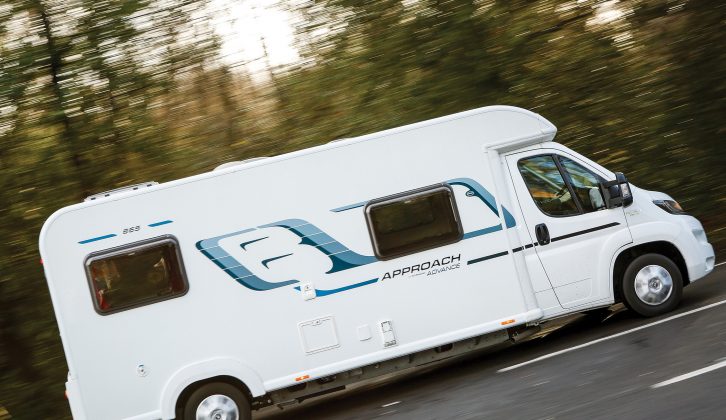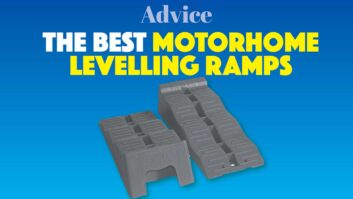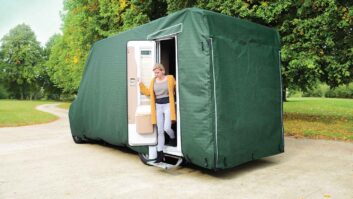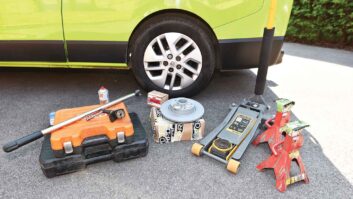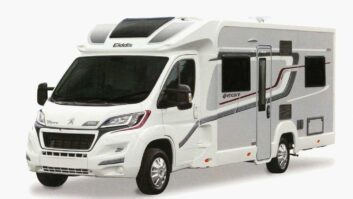You might think that motorhomes have a far cushier life than cars – unless you’re talking about a camper that can easily play the role of your daily drive. They have so much less travelling to do, rolling along when you are at your most relaxed, heading for holidays, rather than being stuck in heavy traffic every weekday.
Given such undemanding work conditions, you might well surmise that the tyres rolling beneath your motorhome are destined to last… well, maybe not forever, but plenty long enough to get your money’s worth out of them. Don’t you believe it for a moment. Here’s why.
Tyres can tire out
Tyres are among the most important parts of any vehicle but have an especially tough time on a motorhome because they are nearly always close to fully loaded and spend long periods sitting still. This puts a lot of extra strain on a tyre so we need to make sure we look after them properly. Motorhomes in general cover far fewer miles than most other vehicles; I’m reliably informed that the average mileage is around 5000 per year, which means that it would take many years to wear down the tread. As a result, it’s not unusual to see 10-year-old tyres with 7mm of tread left on them.
The first thing we need to consider when buying new tyres is whether they are suitable for the loads they’re going to carry. All motorhomes are built on a commercial vehicle chassis so the tyres will need to have a minimum 8-ply rating and must have the letter ‘C’ in the size data on the sidewall. I recently saw a set of alloy wheels and tyres being advertised as suitable for a Volkswagen LT van – except that they weren’t suitable at all. I run a motorhome workshop, so I know that these were car tyres and car wheels, neither of which have a load rating suitable for a 3.5-tonne vehicle.
Tyre types and load ratings
Tyres also have a load rating so we need to make sure that this is sufficient for the actual weight of the vehicle they will be fitted to. Several types of tyres are available as well: summer tyres, winter tyres, mud and snow (M&S) tyres and four-season tyres.
Summer tyres are exactly what they say they are: suitable for use in summer conditions, that is warm temperatures and mostly dry roads. They’re likely to be made of a relatively hard rubber compound so they will give good wear but this is likely to be at the expense of grip, especially on wet grass.
Winter tyres are generally made of softer rubber compounds, designed to give better grip in poor conditions, but the downside is that they will wear rapidly and can be more prone to punctures. They will usually have a more open and blocky tread pattern than summer tyres to improve grip in poor road conditions.
M&S tyres are generally summer tyres but with a more open tread pattern that gives better grip on muddy fields (and snow). This makes these a good option for motorhomes.
Four-season tyres simply provide a compromise between what is required for the best of summer and the worst of winter conditions. If available in the required size and load index, these are another good option for motorhomes.
How old is ‘past it’?
Tyre age is another crucial factor. All road tyres sold in the UK since 1990 have carried a date code – from 1 January 1990 it was a three-digit code; the first two digits indicate the week number and the third is the year of that decade.
From 1 January 2000 it changed to a four-digit code; the first two still indicate the week of manufacture but now the last two indicate the year.
Last month, we had a 1992 campervan in our motorhome workshop for a couple of small jobs that necessitated removing the spare wheel. That’s when I noticed that it had a three-digit date code of 162 (week 16 of 1992), making it a 24-year-old tyre! It is generally accepted within the motor industry now that six years is the maximum safe life of a road tyre.
It’s a good job I noticed the tyre – I had to remove it because one of the jobs we needed to do on that elderly camper was to replace the leisure battery, which was in the engine bay below the spare wheel. The main fuse to the battery looked grotty, so I decided to swap that as well, but I got a shock when I removed the old 40A maxi blade fuse. It had blown at some point but, instead of replacing it, some bright spark had stuffed silver foil into the fuse to complete the circuit. A new battery and waterproof fuse holder fixed the problems.
You never know what you’re going to find when you buy an old campervan, as Nigel Donnelly is finding out with our 1980 Volkswagen T25 project campervan Wilma. He always knew he’d better check the VW camper’s pick-and-mix of tyres – and a trip to the garage confirms why she’s ‘all tyred out‘ and behaving badly on the road!
A keen motorcaravanner, Practical Motorhome’s technical expert Diamond Dave runs his own leisure vehicle workshop. Find out more at Dave Newell Leisure Vehicle Services.
I noticed that it had a three-digit date code of 162 (week 16 of 1992), making it a 24-year-old tyre!
